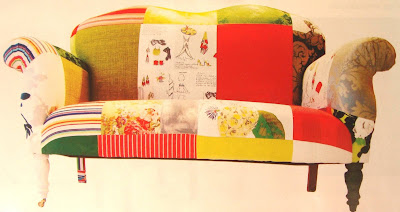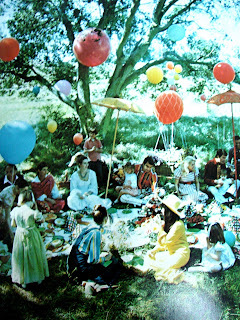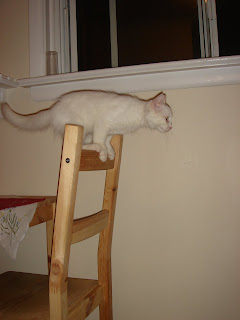My first memory about a paisley pattern was a shawl my mum was owning, when I was still pretty young. It was a red shawl with a blue and multicolored texture and I really liked it.
I didn't wanted to wear it by myself, I thought it's something

what older people were wearing, but I liked to look at it and study the complexity of the color and pattern.
My mum told me, that this is called Paisley-Pattern and even when it is an English town, actually these kind of pattern came from India.
I guess this was even more fascinating and exotic for me.
As

I grew up, I forgot about the shawl and started liking monochrome things much more than patterned.
But, in recent years more and more products were coming up, on the market with a fresh modern interpretation of the old style, that finally I wasn't able to ignore all this colorful dishes, pillows, tablecloths, clocks and wallpapers any longer and so I started from the very beginning of my own rediscovery by learning about the pattern by itself:
From the the author Meg Andrews at
Victoriana.com is a very good introduction in the history of the pattern online available, I defiantly learned a lot about production methods and developme

nt and of course also, how 'the' paisley got its name and would like to sum up the new learned knowledge in the following:
Paisley shawls, directly from Kashmir or woven in Europe, were highly in Fashion, for around 100 years, between 1780 till 1870. Later the pattern got rediscovered by the 'hippie'-movement, because of its psychedelic look in the 1970s and

around thirty years later it started making a slow comeback, but this time more often in home fabrics and designs, than in clothes and shawls.
It all started with the East India Company. The people from military and traders were bringing Kashmir shawls back home and it became an expensive trend.
The European Manufacturers began to weave and print such patterns by themselves, to make it less expensive and because in the town of Paisley were the most shawls produced and over the largest period of time, the name of the pattern became synonymous with this Scottish town.
The Motif

In the very beginning, the motif was a flowering plants with roots, this developed later into a spray of flowers, which finally became the stylized cone-shape motif, which has the name: Botey or Paisley pine.
This pattern can be followed back in time, until the ancient Babylon, were it symbolized the first green of a date palm. As the palm provided food, water and shelter in the desert area it was considered to be the tree of life and the pattern got also recognized as a fertility symbol.
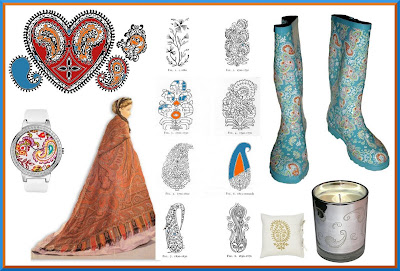
The Ka
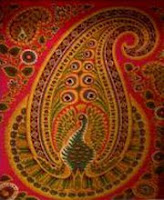
shmir Shawl
These shawls were made since the eleventh century, but the industry began 500 years later. The word shawl comes from the Persian word shal, which means a woven fabric. Especially under the rule of the Mughals since 1586 the arts blossomed and the shawl industry grew. As a weaver was working around three years to complete one shawl, a shawl was considered to be a very prestigious symbol, which demonstrated the wealth and class of a man and therefore his family. With the increasing European demands, the production methods changed and later several people were weaving small pieces which got sewed together in a patchwork or embroidered. One shawls of this kind was then able to be finished in 15 days.


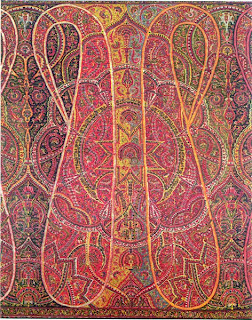
The shawls were made from goat hair, which is soft and light and has a natural sheen i

n it. The finest, softest quality comes from the central Asian wild goats, which is called Shah-Tus (King's Wool). It is from the underbelly of these goats and allows them a protective layer against the cold in extreme altitudes of the Himalaya. In spring the goats rubbed themselves against bushes to get a lighter fur for summer, then these wool got collected and was only used for the most expensive shawls. The more common quality was from the domestic goat, the Pashmina goat.
European Methods
Even with the better developed industry in Kashmir, the demands were not able to be satisfied in Europe.
So in many European countries, the manufactures started to imitate Kashmir shawls. One of the first producers was Edinburgh in 1790, Paisley followed 15 years later. In 1812 Paisley introduced an attachment to the hand loom which allowed them to weave in five different colors of yarn, so that they were able to copy the shawls much better.

The European shawls were woven in silk and wool and therefore pretty heavy. The early shawls needed a vertical thread of cotton or silk and a pattern thread of wool... just wool would have made it lighter, but it wasn't stable enough. But then the French invented a fine wool fiber, which was spun around a silk core and so it was possible to make much lighter whole wool shawls, then. Also from France came the invention of the Jacquard loom at the nineteenth century.
Before 1820, the weavers needed a draw boy, who took care of the pattern. The Jacquard Loom then, was using punched cards, which eliminated human error, made the work easier and it was possible to copy an

y wished pattern in many colors. Due to this, the circumstances of the weavers changed. Until 1820, it was mostly one male weaver with his helpers, who lived and worked in a small house and were weaving, designing and selling by himself. With the new technique the cottage industry changed into a factory based one.
Changes in Fashion
In 100 years, the fashion changed a lot and also the needed shawl for it.
In 1770-1810 simple white muslin dresses were in fashion. They were accomplished by simple, long light stoles with narrow borders The centers were either plain or had a small repeating pattern.
In 1820 with the introduction of the Jacquard loom, the shawls became bolder in designs and color. The dresses started requiring a larger shawl.
In the 1830s the skirts of the women got larger. In this time the shawl became less expensive and highly popular and every better class women needed at least one. In Scotland it became a tradition, that the shawls were worn to church on the first Sunday after the wedding.

From 1840s-75 the skirts had a crinoline (wire underskirt) and it was difficult to wear a coat

above these skirts. Therefore the most people preferred wearing a shawl and so the shawls (or plaids) were made that large, that they were able to cover the skirt as well.
There were also a large variation of printed shawls available. Especially for evening wear a printed silk shawl was the more preferable option. While printing it, for example with roller prints, it was possible to produce an infinite number of designs. During this time millions of shawls were printed for the mass market in clear vibrant colors.
This mass market finally also brought the end to the 100 year old trend.
Once the shawls were affordable for every women with a price of just a few shillings, they fell out of fashion...

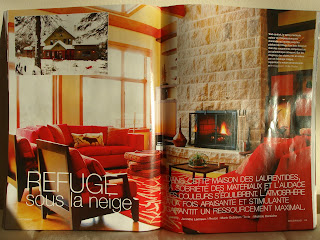
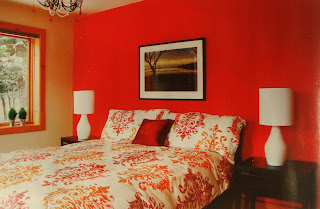
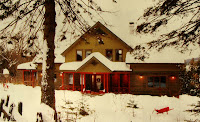


 Pictures from 'Decormag No. 380'
Pictures from 'Decormag No. 380'


 Pictures from 'Decormag No. 380'
Pictures from 'Decormag No. 380'
